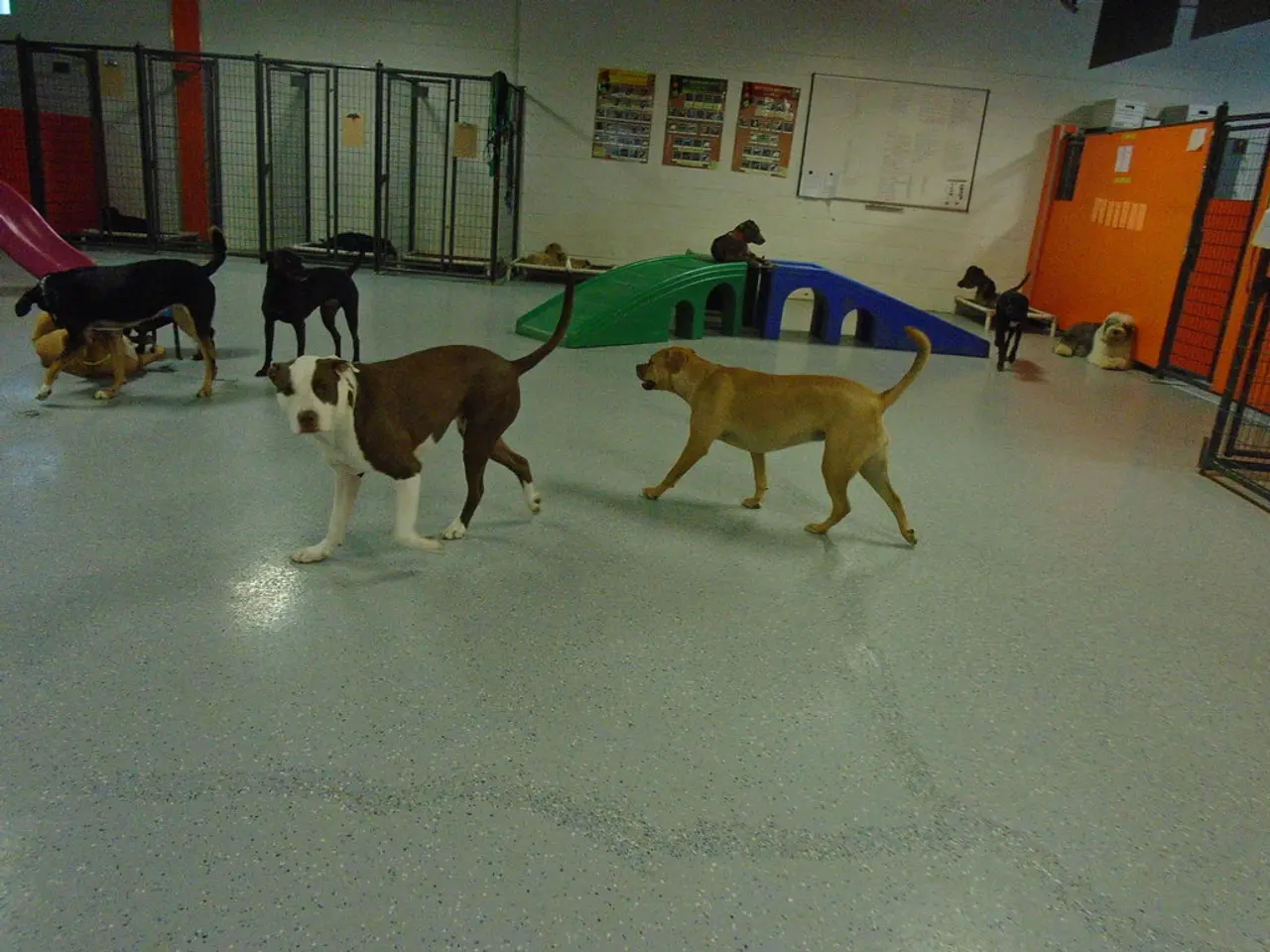Dog researchers unveil naming methodology of canines, indicating they label items based on function instead of visual aspects
In a groundbreaking study conducted by the Department of Ethology at Eötvös Loránd University in Hungary, researchers have discovered that domestic dogs not only memorize words but also understand their functional meaning. This marks the first scientific evidence that untrained dogs in a domestic environment have the ability to generalize verbal labels to categorize functions.
The study, led by Dr. Claudia Fugazza, involved seven dogs considered "word-learning prodigies." The researchers carried out a carefully designed experiment, consisting of four phases, all conducted at each dog's home, in a natural environment, and through play.
During the final phase of the study, the dogs were able to choose the appropriate toy significantly above chance in a test, indicating that they had understood the function and not just memorized words or forms. This suggests that these animals understand labels well enough to apply them to new toys with different appearances, recognizing their purpose in play.
The dogs in the study were six border collies and one blue heeler, known for their exceptional ability to learn the names of dozens of toys through play with their human families. The researchers found that the dogs learned the labels "tirar" (pull) and "traer" (bring) and could associate these labels with sets of toys that shared a function during play.
Remarkably, the dogs were able to generalize these labels to new toys they had never encountered before. This capacity, known as "extension of labels," is an essential part of early language development in humans.
The researchers, which included Juliane Kaminski, Josep Call, and Michael Tomasello from the Max Planck Institute for Evolutionary Anthropology in Leipzig, Germany, highlighted the importance of conducting research in natural contexts. The study reflects a parallel with the natural development of language in humans, as the dogs had learned to apply labels to new toys, recognizing their function in play.
The findings of this study open up new questions about the evolution of language and cognition. The capacity of an animal to understand and apply labels based on function suggests that certain linguistic abilities may have a greater evolutionary potential than previously thought.
This ability, observed only in some animals extensively trained to understand language, such as monkeys and dolphins, has now been shown to emerge in natural conditions in dogs trained to learn words (without formal training, only through daily play).
The study was publicized by EurekAlert!, the platform of the American Association for the Advancement of Science (AAAS), and published in the journal Current Biology. The research reveals that some dogs with a large vocabulary can extend verbal labels, such as names of toys, to new objects based on their function, not just appearance.
This discovery not only challenges our understanding of animal cognition but also sheds light on the evolutionary roots of human language development.
Read also:
- Magnesium-Rich Beverages: Origins, Advantages, and Potential Hazards
- Chinese Rare-Earth Mining Endangers the Mekong River's Integrity
- Deteriorating munitions are submerged in the Baltic Sea, and Germany aims to retrieve them before it's too late.
- Individuals Should Act if Drivers Display Risky Behavior - National Safety Awareness for Passengers Week







